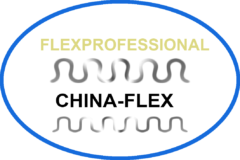Introduction: Continuous circular corrugated pipe forming machines play a crucial role in the production of various types of corrugated pipes used in industries such as construction, agriculture, and infrastructure development. This article delves into the working theory of these machines from a professional standpoint, highlighting the key components and processes involved in their operation.
Working Principle: The continuous circular corrugated pipe forming machine operates on the principle of transforming flat metal or plastic sheets into corrugated pipes with a circular cross-section. The process involves several sequential steps:
- Material Feeding: Initially, flat sheets of the desired material, typically steel or high-density polyethylene (HDPE), are fed into the machine. These sheets serve as the raw material for the corrugated pipes.
- Corrugation: The material undergoes corrugation, where specialized rollers equipped with corrugated patterns impart the characteristic wave-like shape to the sheets. The rollers exert controlled pressure on the material, creating uniform corrugations along its length.
- Forming: Subsequently, the corrugated sheets are formed into a circular shape by a forming mechanism within the machine. This process involves precise bending and shaping of the corrugated material to achieve the desired pipe diameter and geometry.
- Welding (if applicable): In cases where longitudinal seams are required, such as in steel corrugated pipes, welding may be performed to join the edges of the corrugated sheet securely. Advanced machines may integrate welding stations for seamless fabrication.
- Cutting and Finishing: Finally, the continuous pipe is cut to the desired length using cutting tools integrated into the machine. Additional finishing processes, such as edge trimming or surface treatment, may also be carried out to enhance the quality of the finished pipes.
Key Components: A typical continuous circular corrugated pipe forming machine consists of several essential components:
- Feeding Mechanism: Responsible for accurately feeding the flat sheets into the machine at a consistent pace to maintain uninterrupted production.
- Corrugation Rollers: Specialized rollers with precisely engineered corrugated patterns that impart the desired shape to the material.
- Forming System: Includes mechanisms for bending and shaping the corrugated sheets into circular pipes of various diameters.
- Welding Unit (if applicable): Incorporates welding equipment for joining longitudinal seams in steel corrugated pipes.
- Cutting Tools: Utilized for cutting the continuous pipe into individual lengths as per specifications.
- Control System: An integral part of modern machines, comprising PLCs (Programmable Logic Controllers) and HMI (Human-Machine Interface) panels for monitoring and controlling the entire manufacturing process.
Conclusion: Continuous circular corrugated pipe forming machines represent a vital technology in the production of corrugated pipes for diverse industrial applications. By understanding the working theory and key components of these machines, manufacturers can optimize their production processes and ensure the consistent quality of the fabricated pipes. Continuous advancements in technology continue to enhance the efficiency, precision, and versatility of these machines, further expanding their utility in various sectors.

